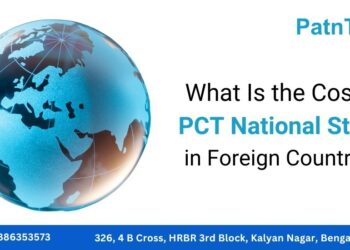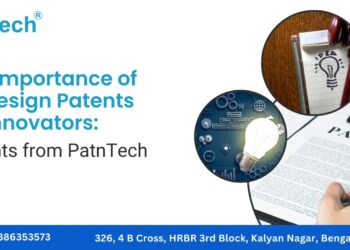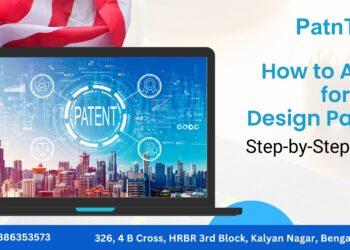What is the difference between patents, copyrights and trademarks?
- March 13, 2021
- Posted by: Patntech
- Categories: Blog, Patents, Trademark


According to “2020 Special 301” Report by Executive office of the President of the United States, India remains on the Priority Watch List in 2020. India is one of the top five countries for fake goods, as noted in the OECD’s Trends in Trade in Counterfeit & Pirated Goods (2019). Statistics like this will make the economy worried obviously. The awareness among the citizens and as well as the administrators is what the nation has to look upon.
The race with human intellect in comparison with technological development is quite afar. It is human who creates and it’s the technology who is ruling the world. Unlike a decade back, it is not an excuse for not having knowledge of intellectual property rights. The moment you create a piece of work by the inbuilt skills, it is your intellectual property. And such properties must be protected from exploitation.
If one is confused to distinguish to which category an innovation belongs, then this article will help in clearing the confusions.
Patent
Patent is a right granted by the government authority or license conferring monopoly for a set period of time especially for the purpose to exclude others from making, using, or selling an invention.
In India, a patent is granted for invention for new product or new process of manufacturing any goods. In relation to medicine or drug, the certain classes of chemicals, no patents are granted for the substance but the process of manufacturing and substance is patentable. The inventor, or a person to whom the inventor has assigned or is under an obligation to assign the invention, can apply for a patent in India. The validity of patent is usually granted for a period of 20 years from the date of filing the patent application.
Not every invention is patentable. The restrictions to patentability are provided under the Patent Act, 1970 for various reasons which includes:
- An aesthetic creation;
- A discovery, scientific theory or mathematical method;
- A scheme, rule or method for performing a mental act, playing a game or doing business, or a computer program;
- Inventions that are frivolous and contrary to natural laws;
- Against the public morality;
- Essential biological processes for the production;
- Presentation of information;
- Traditional knowledge is not an invention.
The procedure for procuring a patent will involve writing about the invention in detail. The description must include the diagrams, drawing and sketches that explain the invention and its discovery. Then, the patent application will be published in the journal. The patent application falls into the public domain and is subjected to objections from public. The patent office examines and grants the patent.
Once the patent is granted, the patentee will have the rights to exploit the patent, grant licenses, to surrender the patent and sue others for any infringement.
In India the patent application fees for e-filing by a natural person, small entity or others costs up to ₹1600, and ₹8000 respectively (Multiple of amount in case of every multiple priority). The amounts are as per the Fees mentioned in the https://ipindia.gov.in/.
Copyright
Copyright is a legal right conferred to the owner of the intellectual property. As per World Intellectual Property Organization (WIPO), the copyright or author’s right is a legal term used to describe the rights that creators have over their literary and artistic works. The works covered under the copyright include books, music, paintings, sculpture, cinematography, computer programs, advertisements, designs etc. Copyright ensures certain minimum safeguards of the rights of authors over their creations, thereby protecting and rewarding creativity.
A copyright grants protection to work from being copied or reproduced without the owner’s consent; use the work for public performance; broadcast it in various forms and translate the same to other languages.
Often the art is forgotten due to the negligence of recognition it fails to gain. A work acquires copyright from the time of its birth and does not require any formality. However, the certificate of registration serves as a prima facie evidence in a suit relating to ownership of copyright. The Copyright Act, 1957 has come into effect from January 1958. The Copyright (Amendment) Act, 2012 is the most substantial.
According to the Act, an author of the work can file for an application of registration, himself or through his legal representative. This application can either be made physically or through e-filing available on the official website www.copyright.gov.in. The applicant can file one application for each of his work. The requisite fee should be paid as prescribed in the second schedule of the Rules (https://copyright.gov.in/frmFeeDetailsShow.aspx).
The application is entitled to examination wherein it will be open for objections. After the clearance is received for objections, the application undergoes scrutiny. Lastly, the application is termed registered once the Registrar of Copyrights enters the details of the copyright into the register of copyrights and issue a certificate of registration.
Applications for original literary, dramatic, musical and artist works it is valid for the duration of copyright is the lifetime of the author or artist, and 60 years from the year following the death of the author.
In case of cinematograph films, sound recording, photographs, posthumous publications, anonymous and pseudonymous publications, works of government and works of international organisations the 60-year period is counted from the date of publication.
Trademark
The trademark, which is also known as brand name is a word, name, device, label, numeral, alphanumerical, combination of colours etc. used by owners to differentiate their goods and services or other articles of commercial nature from those of others in the market.
Examples of Trademarks include Puma, Adidas, Marks & Spencer, Woodlands, Coca-Cola etc. that have become the face of the company.
The functionality of good trademark is that it paves way for identifying goods/services and its origin. The tradename guarantees its unchanged quality of the goods/service. The tradename advertises the goods/services and it also creates an image for the goods/services.
Therefore, any person who claims to be owner of such trademark used or is planning to use, can apply in the prescribed manner for registration. The applicant has the option to choose under one or more of 45 trademark categories for goods and services in which he is already in business or is proposed to be using. It becomes crucial to make choice of class as the description should match with the goods/services produced by the applicant.
Trademarks, like all other intellectual property, are subject to scrutiny. The trademark application is published in the TM journal after it has been accepted by the Trademark Office. Following that, the trademark application is made available to obtain public comments. When the trademark is approved, the applicant receives a certificate.
The validity of trademark of all kinds is 10 years. The trademark needs to be renewed once in every ten years to have perpetual protection the trademark is removed if it is not renewed within the permitted time.
For filling a trademark, it costs ₹4,500 per class for an individual and there are concessional rates for start-ups and MSMEs. For entities other than above type are considered as large entities and have to pay ₹9,000 per class.
The updated/ revised costs and amended Laws and Rules can be reached at the official website administered by Government for Intellectual Property Registrations (https://ipindia.gov.in/index.htm).
And for further details with regard to procedure of registration, feel free to contact us.
-Author: Sneha V Kopparad
AIPPI World Congress, Yokohama, Japan
We are pleased to share that PatnTech’s Managing Partner, Mr. Chandrasekhar Raju, attended the AIPPI World Congress held in Yokohama, Japan, from September 13–16, 2025.
October 1, 2025What Is the Cost of PCT National Stage in Foreign Countries?
The Patent Cooperation Treaty (PCT) simplifies patent protection for companies and inventors worldwide
August 6, 2025The Importance of US Design Patents for Innovators: Insights from PatnTech
In today’s competitive marketplace, innovation drives success, and protecting those innovations is crucial.
July 21, 2025How to Apply for a US Design Patent: Your Step-by-Step Guide
A US design patent protects the unique ornamental design of an article of manufacture. It helps businesses and inventors safeguard their innovative creations.
July 10, 2025




